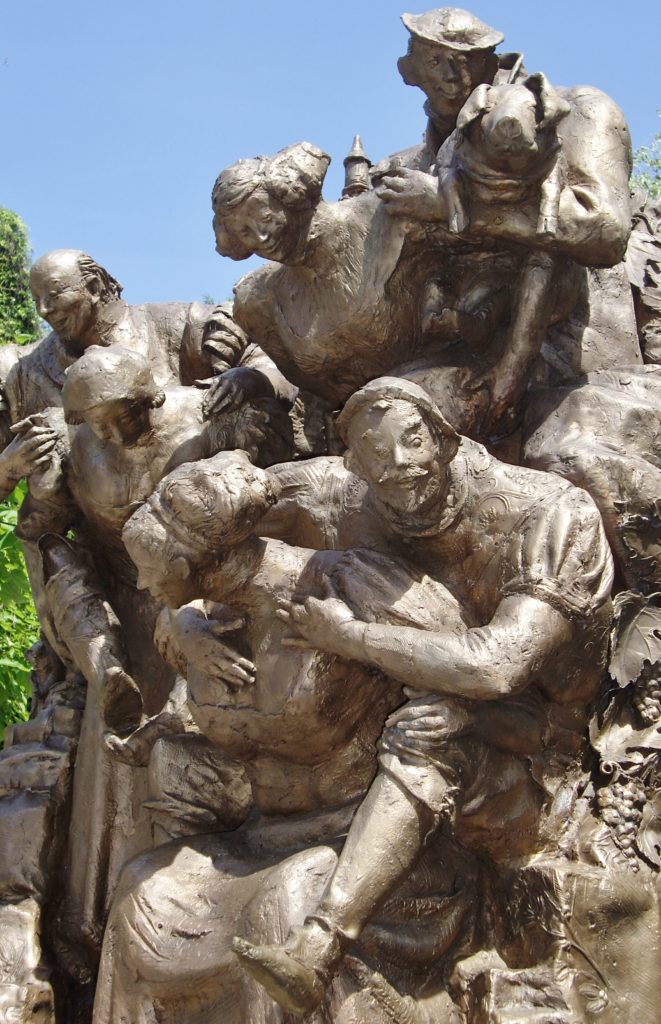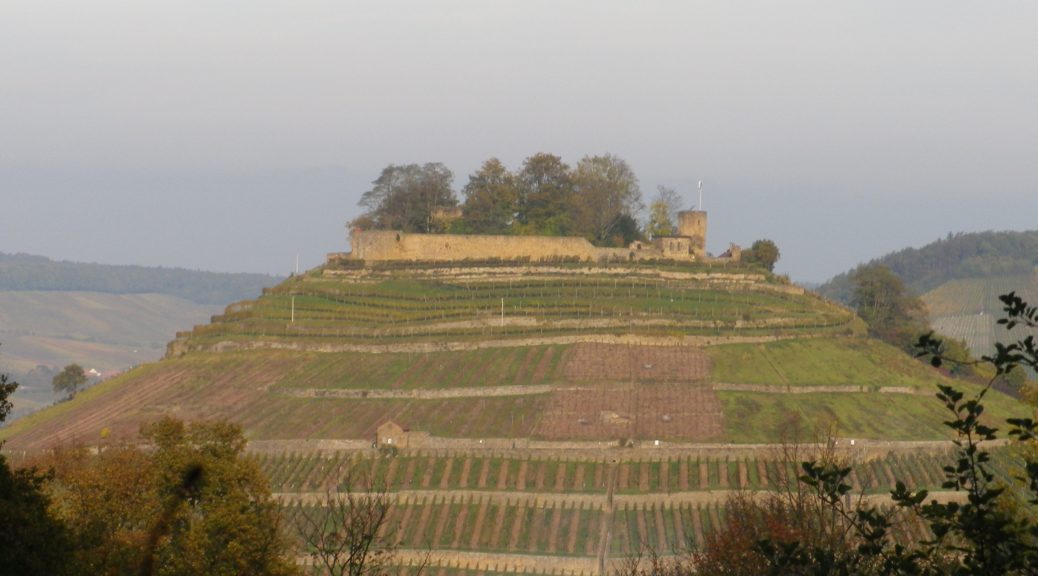A castle stands atop an unusually steep, vine-covered hill, just east of the German city of Heilbronn in wine region of Wuerttemberg. Famous for having defied the Emperor, the little town of Weinsberg has a unique story. Was it the wine that inspired them?
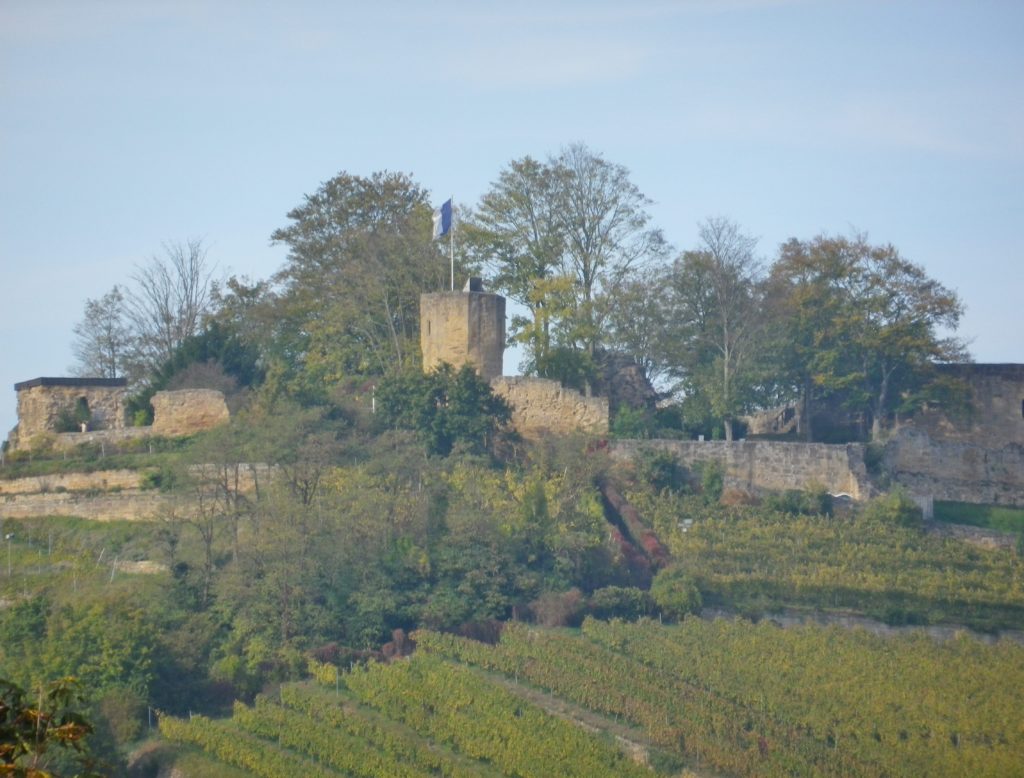
I had to know more about the castle, rising so prominently above the small town and vineyards. It seems that the local noblemen became involved in a dispute with Emperor Conrad the Third, which led to armed conflict. Ultimately, the Emperor besieged their castle. Now known as Castle Weibertreu, as in true, or loyal, women, its name commemorates the action of the women besieged with the rebellious men. The emperor, on the cusp of victory, magnanimously agreed safe passage to the women, stipulating they could only take with them what they could carry. The women duly staggered out of the castle, carrying the men on their backs! The chivalrous Conrad kept his word, and let them all pass. (But he came back later and had the last laugh.)
The castle, now in ruins, lies right along the circuit path I followed. The path is thematically devoted to wine and the “true women”, so there was plenty of opportunity to contemplate both as the trail meandered over hill and dale around the vineyards, town and castle.
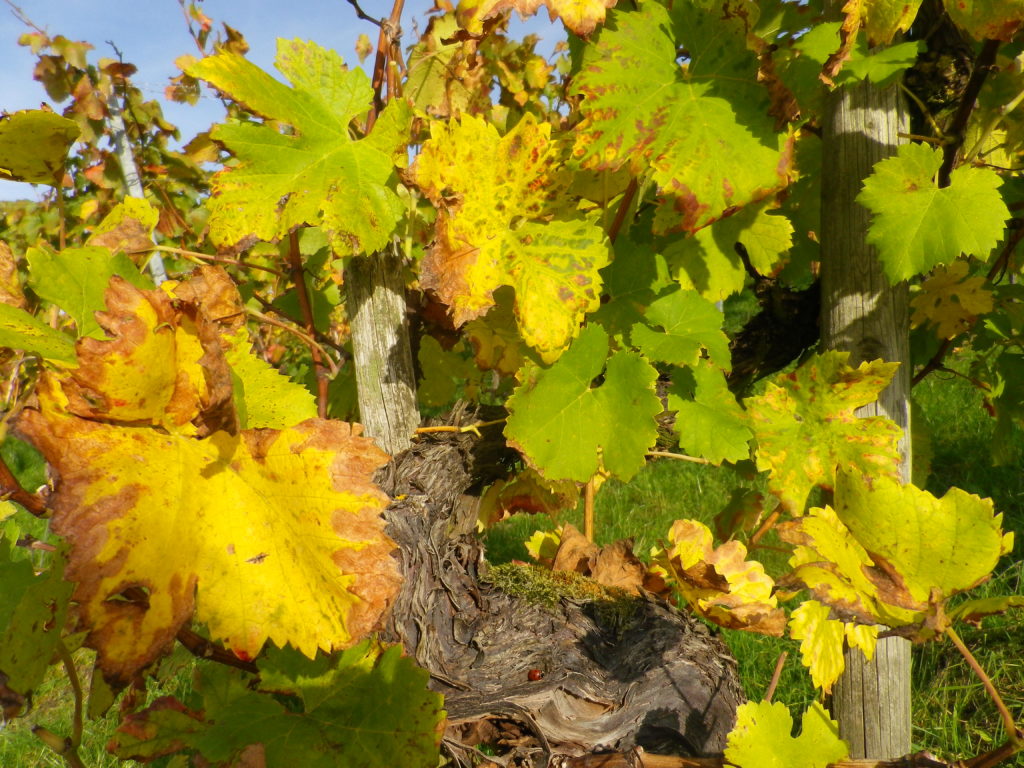
In fact, once away from the train station, the official start, the trail came quickly to fields and vineyards following an asphalted path with very little inclination. Then picking up a grassy pathway, the trail began to climb, for the first time.
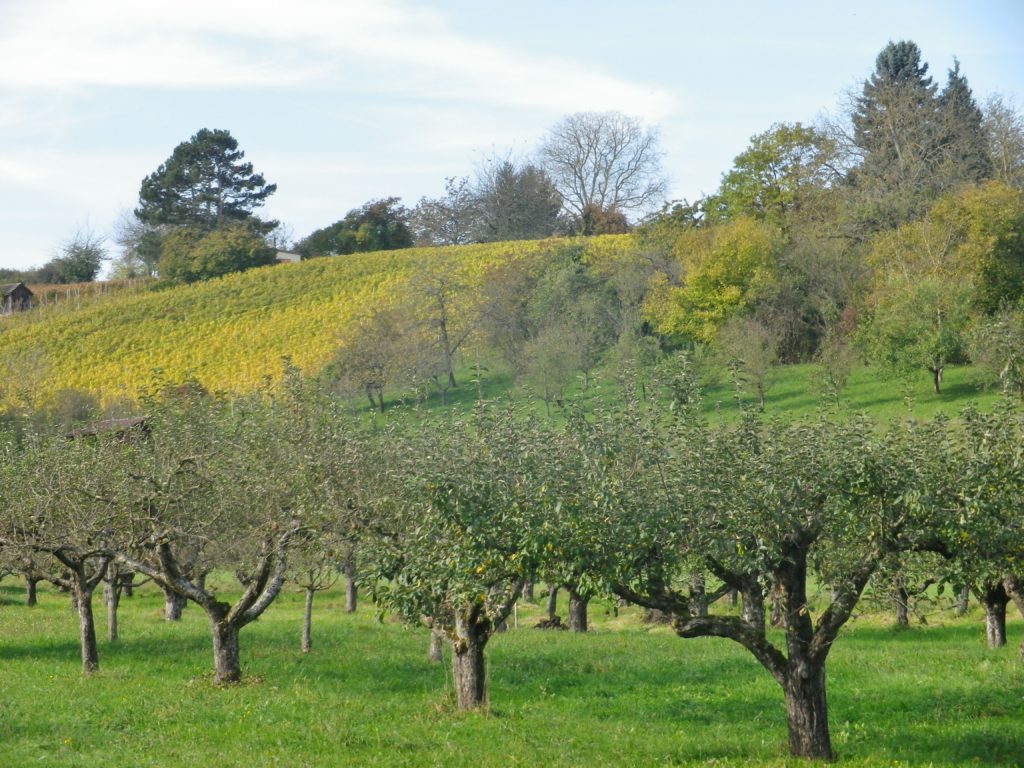
Coming out of the forest atop the first of three summits, was a wonderful field, occupied in part by sheep grazing contentedly. As it circled around the top of the plateau, it went first through fields, then through more woodland. The trail lead downhill to a nice tavern (a gasthaus) where a bit of lunch, or a glass of wine could be ordered. But, as is often the case, this gasthaus in the woods was closed on Mondays. Once through the woods, the vista opened up dramatically. Ridgeline after ridgeline of rolling hills appeared to the north and west, as I entered the Stiftsberg, an expanse of vineyards covering an entire mountainside, glowing gold in the light of a setting sun. Traversing up the side of that mountain through the vineyards to the forested crest was a pleasant and not-too-difficult task. The trail effected its downhill entry back into Weinsberg on a wide, shady path.
From there, the trail headed steeply uphill to the castle. (As I climbed, I wondered how the women’s action would have fared had their route been up-, vice down-, hill.) Just below the castle, the trail joined the educational circuit trail “Wine and Roses”, which focused on wine-making traditions associated with this area. The terraced vineyards of Schemelsberg, and Rantzenberg parcels, reached to the foot of the castle. One section of the terrace walls contains stone plaques with sayings: each from a graduating class of the town’s viticulture school, the oldest in Germany, established in 1868.
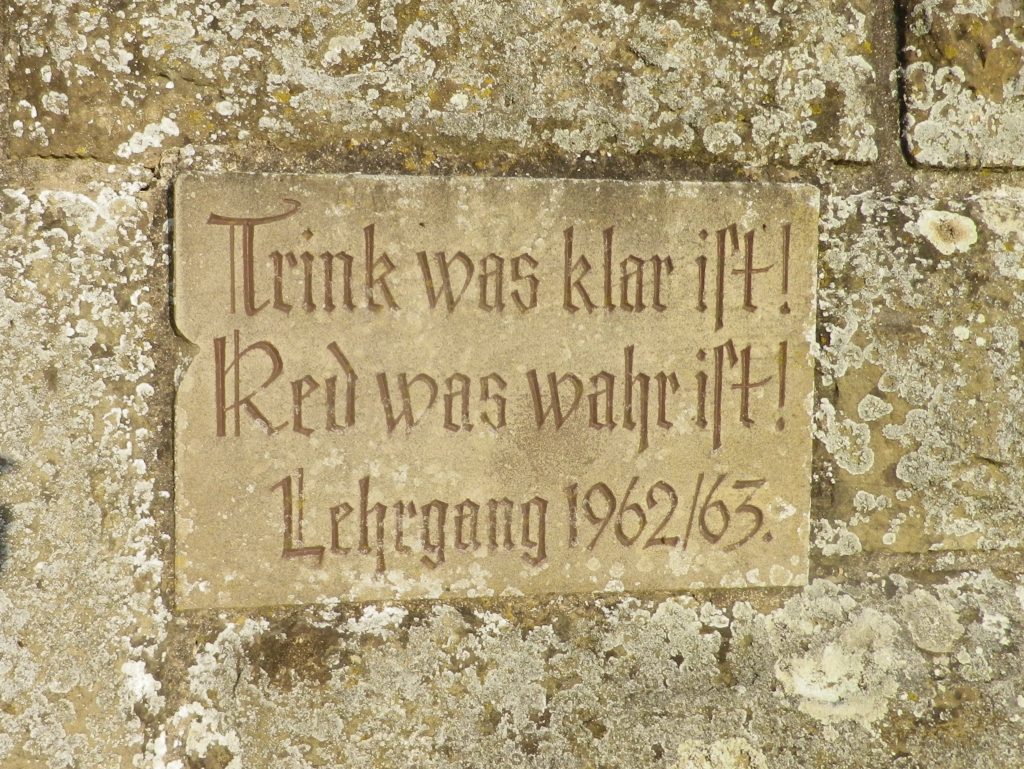
The trail later passes the current viticulture schoolhouse. Since it adjoins the Staatsweingut Weinsberg (Weinsberg winery), I stopped to purchase some local wine. Weinsberg’s traditions with wine date back centuries. The first mention of viticulture in the town dates to 1271, about 125 years after the siege of the Weibertreu Castle – though that is not to say there weren’t vines here before, or that wine wasn’t already readily available. After all, as the nearby baths attest, Romans were here in the early centuries of the first millennium A.D.
I guess we will never know the role wine played in the ingenious solution the women of the castle executed to save the day! But whether Weinsberg’s wine inspired the unique interpretation of the “carry” clause, or awoke the Emperor’s good-humor when he saw it, I suspect wine had, and will always have, a great role to play in this unique little town.
